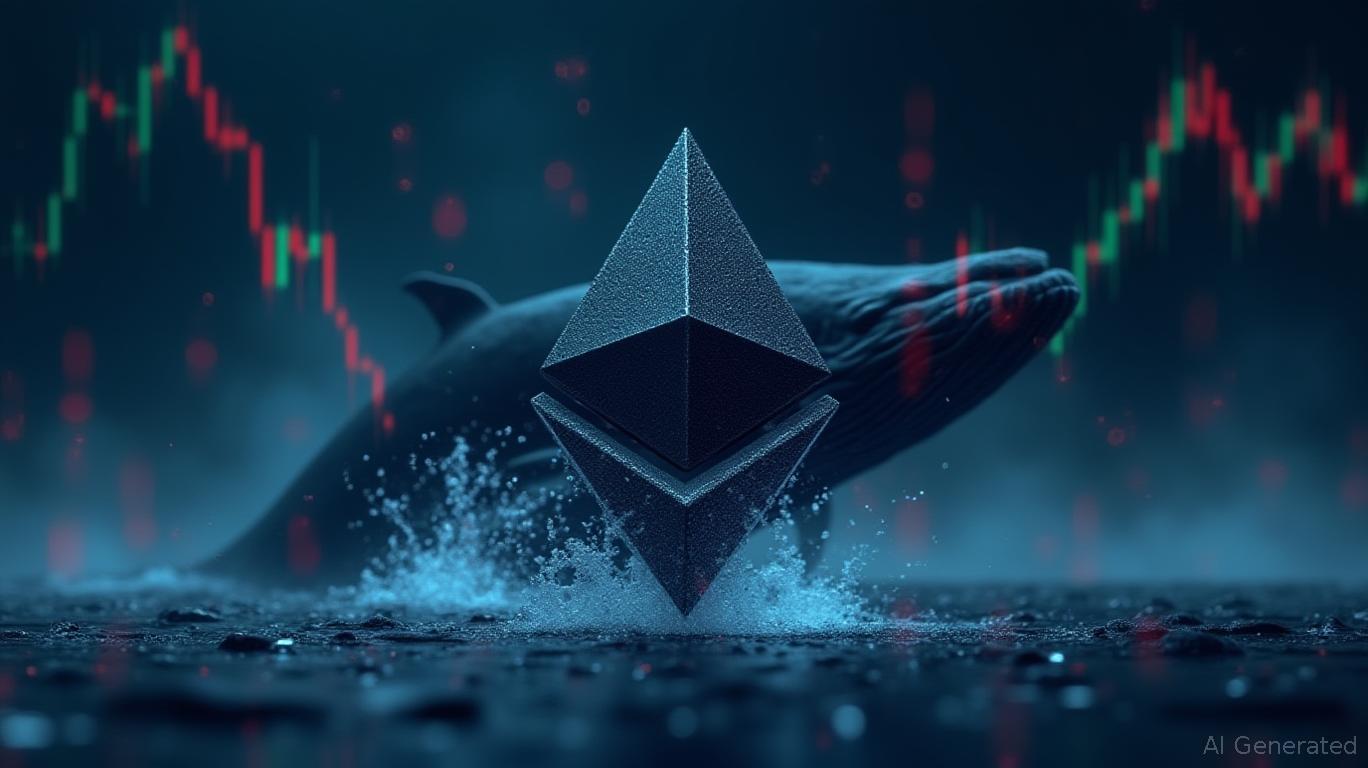MEV Takes Advantage of DeFi Transparency, Triggering Concerns Over Fairness
- MEV exploits blockchain transparency to reorder transactions, creating a "hidden tax" that deters institutional DeFi adoption and harms retail users. - Sandwich attacks and front-running cost retail investors up to 80% of MEV-driven losses, with 24% of Ethereum blocks affected annually. - Trusted execution environments (TEEs) emerge as a solution by privatizing transaction data, potentially unlocking $trillions in institutional capital. - Experts warn MEV centralizes power and inflates costs, requiring g
Maximal Extractable Value (MEV) is increasingly recognized as a major obstacle to the widespread adoption of decentralized finance (DeFi) by institutions, while also imposing heavy financial burdens on individual crypto investors. MEV allows miners or validators to rearrange transaction sequences for their own gain, effectively creating a "hidden tax" that discourages financial institutions from participating in DeFi, and contributes to greater market instability and inefficiency, as reported by
MEV takes advantage of the information gap in how blockchain transactions are ordered. Because transactions are visible to the public before they are finalized, savvy actors can exploit this by using tactics like sandwich attacks—placing trades before and after a user's transaction to drive up costs. The Coinotag report references data from the European Securities and Markets Authority (ESMA), which indicates that MEV-related activities impact about 24% of

The lack of privacy in DeFi protocols has become a significant barrier for institutional players, who need confidentiality to avoid being front-run or manipulated. Aditya Palepu, CEO of DEX Labs and a key contributor to DerivaDEX, pointed out that institutions are the backbone of financial markets, and their absence due to MEV vulnerabilities leaves retail participants facing less liquid markets and increased costs, as he told Cointelegraph. Palepu added, "When institutions are unable to participate efficiently, it negatively impacts everyone," emphasizing that insufficient infrastructure limits the liquidity and stability necessary for DeFi to grow.
Trusted execution environments (TEEs) are being explored as a promising solution, as they encrypt transaction information on the user's side and only decrypt it in secure enclaves after transactions are ordered. The Coinotag report notes that this method keeps order flow private, making front-running unfeasible. Palepu stressed that TEEs could "create a more level playing field" by ensuring confidential order processing, encouraging more equitable DeFi engagement, and reducing exploitative behaviors. Although TEEs are still in the early stages of adoption, the report suggests that their implementation could attract trillions in institutional investments, bringing greater stability and less volatility to crypto markets.
Industry analysts caution that MEV's contribution to centralization and rising costs threatens the foundational ideals of DeFi. While blockchain networks are built for transparency, this openness has been misused to create unfair advantages similar to those in traditional finance. Tackling MEV is not just a technical problem—it also demands governance reforms and collaboration to align the interests of all parties involved. As the debate over MEV's future intensifies, experts told Cointelegraph that the evolution of DeFi will depend on finding a balance between innovation and fairness, ensuring protections for both individual and institutional users.
Disclaimer: The content of this article solely reflects the author's opinion and does not represent the platform in any capacity. This article is not intended to serve as a reference for making investment decisions.
You may also like
Democratizing Blockchain Profits: Mevolaxy’s Application Facilitates $3.6 Million in Distributions
- Mevolaxy, a U.S. mevstake platform, launched a mobile app and reported $3.6M in Q3 payouts, surpassing its previous record. - Its Mevstake system democratizes MEV strategies by pooling liquidity, offering fee-free staking with reduced market risk through locked terms. - The app emphasizes real-time tracking and user-friendly design, aligning with the platform's mission to make blockchain earnings accessible to all users. - Backed by experienced blockchain engineers and DeFi specialists, Mevolaxy's growth

Ethereum Updates Today: Large Holders Increase Holdings, Offsetting Ethereum's $3,400 Liquidation Risk
- Ethereum faces $3,400 liquidation risks amid $3,600 breakout threats, with $807M short and $564M long liquidations at key levels. - Institutional accumulation (82,000 ETH by BitMine) and whale treasury holdings counter short-term weakness, while U.S. outflows contrast Asian inflows. - Layer-2 platforms maintain $20B TVL despite price declines, and projects like Remittix secure $27.8M to capitalize on market recovery. - Analysts project $4,000-$4,500 medium-term recovery if macroeconomic clarity and stabl

Community First, Not Investors: UnifAI's Tokenomics Redefine DeFi Standards
- UnifAI introduces a tokenomics model allocating 13.33% to community/ecosystem, challenging DeFi norms prioritizing investors. - This contrasts traditional models, emphasizing decentralized governance and user-driven growth through staking, voting, and revenue sharing. - 7% liquidity allocation and 20.75% foundation funds ensure stability, while 15% team incentives align long-term success with stakeholders. - Analysts highlight the 13.33% community focus as a strategic differentiator, mirroring institutio

Ethereum News Update: ISO 20022 Connects Blockchain with Banking Sector, Unlocking $100 Trillion Market
- UBS and Chainlink executed first onchain tokenized fund redemption using ISO 20022 standards, bridging blockchain and traditional finance. - The pilot with Swift enabled standardized subscriptions/redemptions, streamlining RWA settlements without custom integrations. - Tokenized U.S. Treasuries now value $8.6B, with institutions like BlackRock and Deribit adopting them as collateral despite liquidity challenges. - Ethereum dominates 75% of tokenized RWAs and 60% of stablecoins, with Standard Chartered pr
